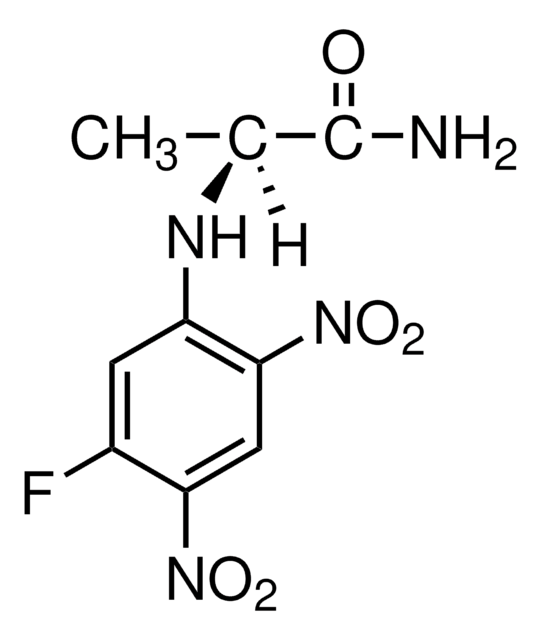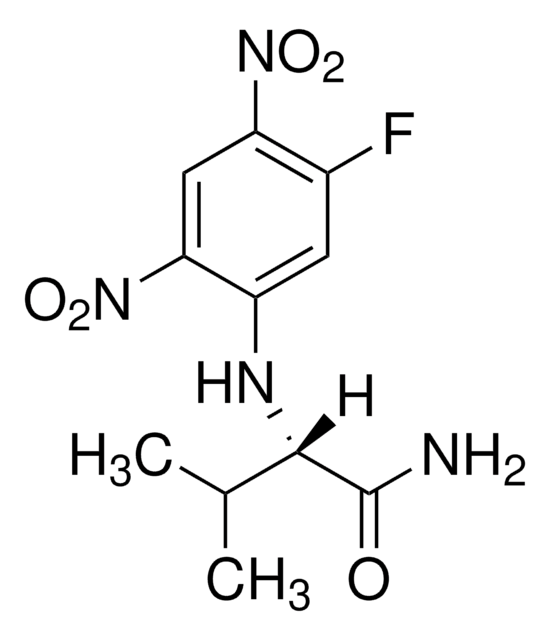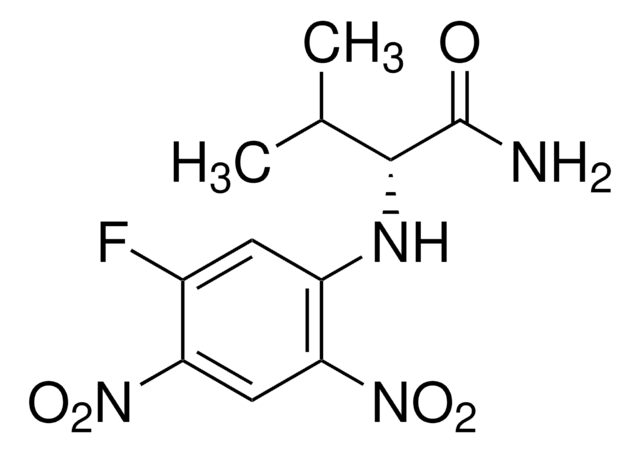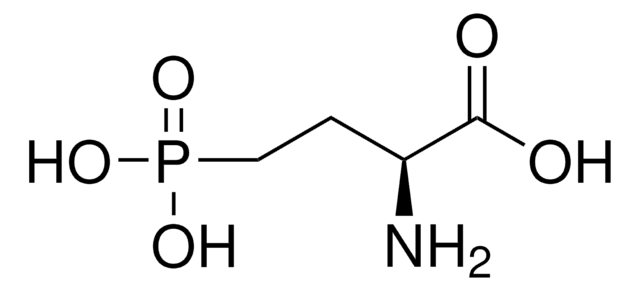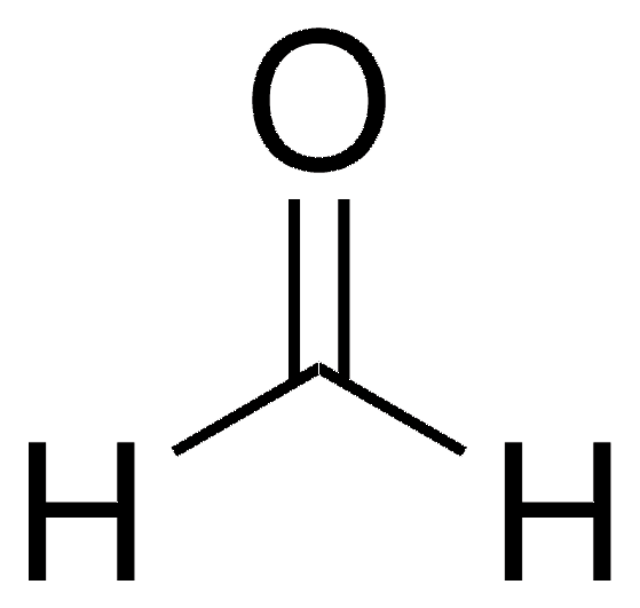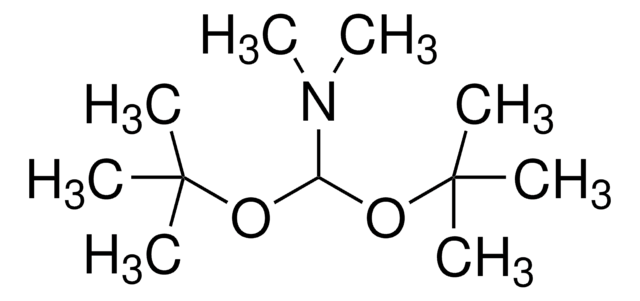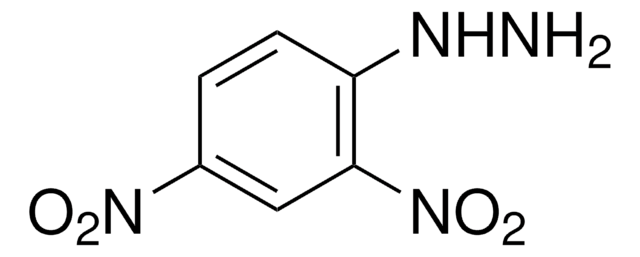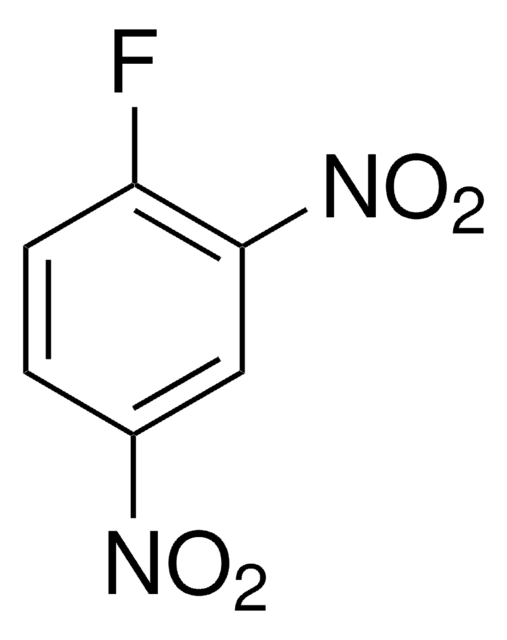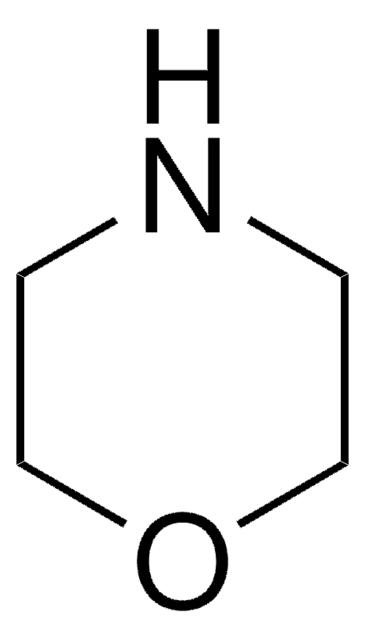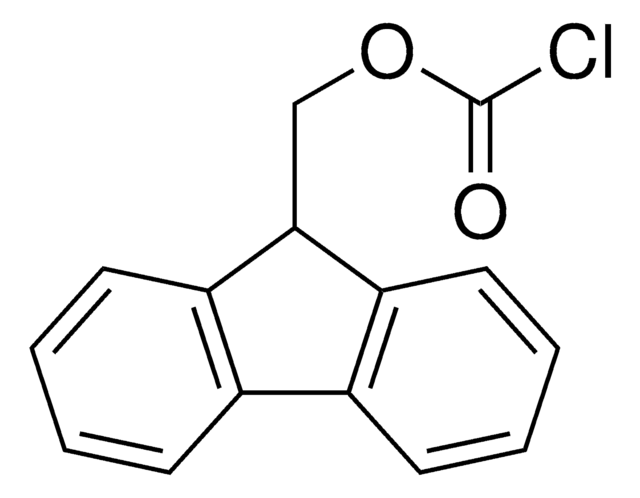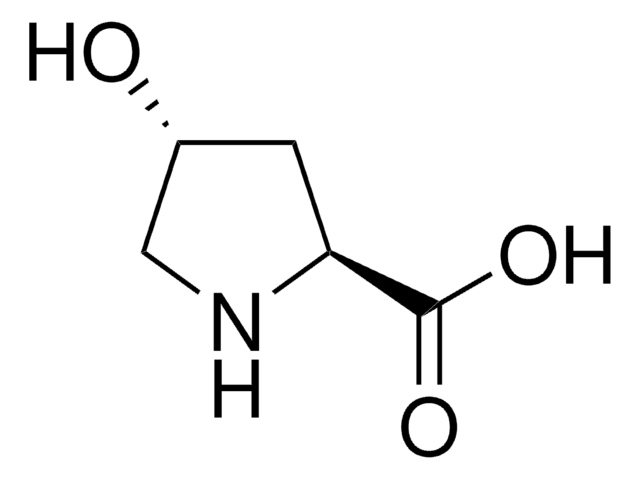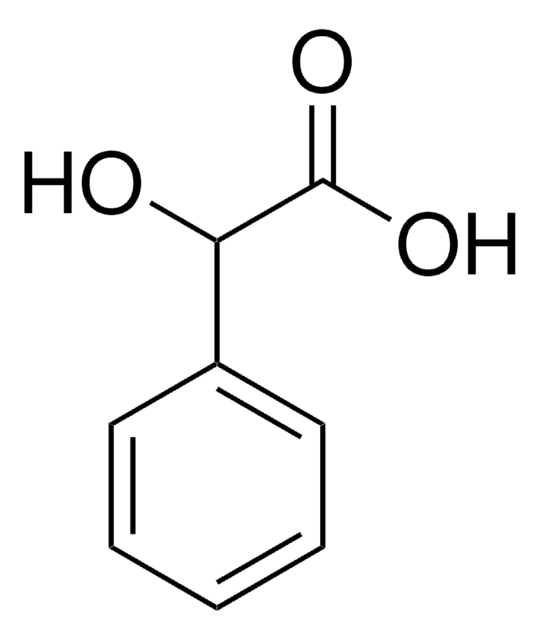71478
Nα-(2,4-Dinitro-5-fluorophenyl)-L-alaninamide
for chiral derivatization, LiChropur™, ≥99.0%
Synonym(s):
FDAA, Marfey’s reagent
About This Item
Recommended Products
grade
for chiral derivatization
Quality Level
assay
≥99.0% (sum of enantiomers, TLC)
≥99.0%
form
powder
optical activity
[α]20/D +56±2°, c = 1% in acetone
optical purity
enantiomeric ratio: ≥99.5:0.5 (HPLC)
quality
LiChropur™
technique(s)
HPLC: suitable
storage temp.
2-8°C
SMILES string
C[C@H](Nc1cc(F)c(cc1[N+]([O-])=O)[N+]([O-])=O)C(N)=O
InChI
1S/C9H9FN4O5/c1-4(9(11)15)12-6-2-5(10)7(13(16)17)3-8(6)14(18)19/h2-4,12H,1H3,(H2,11,15)/t4-/m0/s1
InChI key
NEPLBHLFDJOJGP-BYPYZUCNSA-N
Looking for similar products? Visit Product Comparison Guide
Related Categories
General description
Application
Other Notes
Legal Information
signalword
Warning
hcodes
Hazard Classifications
Eye Irrit. 2 - Skin Irrit. 2 - STOT SE 3
target_organs
Respiratory system
Storage Class
11 - Combustible Solids
wgk_germany
WGK 3
flash_point_f
Not applicable
flash_point_c
Not applicable
ppe
dust mask type N95 (US), Eyeshields, Gloves
Choose from one of the most recent versions:
Certificates of Analysis (COA)
Sorry, we don't have COAs for this product available online at this time.
If you need assistance, please contact Customer Support.
Already Own This Product?
Find documentation for the products that you have recently purchased in the Document Library.
Customers Also Viewed
Our team of scientists has experience in all areas of research including Life Science, Material Science, Chemical Synthesis, Chromatography, Analytical and many others.
Contact Technical Service